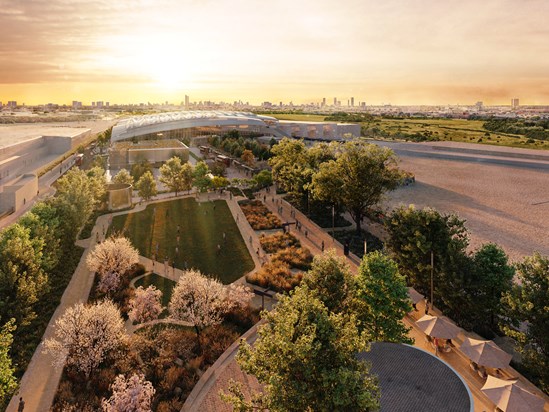A new video published by HS2 Ltd shows the unrivalled connectivity that will be on offer to passengers at Old Oak Common, providing future rail users an idea of what travel at the west London super-hub will be like.
Connectivity
The station will be the 42nd stop on the Elizabeth Line, London’s latest transport artery that has transformed travel for millions in the capital. In addition to the Elizabeth Line and HS2, Old Oak Common will connect into the Great Western Main Line, potentially allowing passengers to transfer onto services to and from the West Country and South Wales. It will also be just 10 minutes from Heathrow, the UK’s busiest international airport.
Old Oak Common station is in west London, sitting in Hammersmith & Fulham and bordering two other London Boroughs – Ealing and Brent. The station site is steeped in railway history, with numerous railway depots previously located there. The vast number of railway lines that cross through this area mean that there is incredible scope to make it the best connected in the UK.
Regeneration
There is over 100 acres of land around the station marked for development. The Old Oak and Park Royal Development Corporation (OPDC) was established in 2015 and is planning a new urban neighbourhood that has been dubbed ‘the Canary Wharf of the West’. There are plans to create 25,000 new homes, and 56,000 new jobs in the area.
As part of the new station development, a new public parkland is being created which can be enjoyed by local residents, workers and rail users. There will be pocket gardens, new trees and shrubs and a new wetland area, The new park will be a place for people to relax as well as a venue for community events and pop-up markets.
Transport has long been the catalyst for regeneration – think of the impact the Jubilee Line extension had reaching Canary Wharf, or the transformative effect high speed rail has brought to the Kings Cross St Pancras area – making it a destination rather than just a transport hub. Old Oak Common is set to be both – a destination and transport interchange in years to come.
Construction
Construction work in west London is in full swing with Britain’s largest railway station ever built in a single-phase taking shape. Rated as being in the top 1% of buildings worldwide for its environmental credentials, the benefits to west London will be huge.
The 2,000 strong team working at Old Oak Common are making significant progress on the excavation of the 850m long underground box that will contain HS2’s high-speed platforms – working to complete the excavation of 930,000m3 London clay before the Old Oak Common spoil conveyor is decommissioned in the summer. The conveyor has been running for nearly 18 months and has meant that over 63,500 lorries (and counting) have not had to use local roads.
Despite our best efforts to minimise disruption, there is an inevitable impact on local community while some works are carried out. In order to create the connectivity at the station, the Great Western Main Line needs to be realigned into the station and a new bridge needs to be built over the neighbouring Old Oak Common Lane. There is a complex coordination of works needed to make this happen utilities diversions inn and around the road. To accommodate double decker buses at the station, the road also needs to be lowered – making the utility diversions even more critical. This phase of complex work will inevitably cause some local disruption and HS2 is working through the options to minimise this as much as possible.
What’s clear, however, is that the next few years are set to be exciting for this area of west London. The future transport connections will drive economic activity, and better infrastructure will transform this part of London into a thriving neighbourhood to be enjoyed by many for generations to come.





